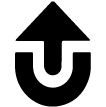Prolog syntax refers to the rules and structure used in the Prolog programming language to define facts, rules, and queries. Prolog is a logic programming language used primarily for tasks that involve reasoning and solving problems based on a set of facts and rules. Here’s an overview of the key elements of Prolog syntax:
1. Facts
A fact represents a basic assertion about the world. It is written as a predicate followed by arguments, ending with a period.
Example:
human(socrates).
This states that “Socrates is a human.”
2. Rules
A rule defines relationships between facts and can be thought of as an implication. It consists of a head and a body, where the body represents the conditions for the head to be true. A rule is written using the :- operator.
Example:
mortal(X) :- human(X).
This rule states that “X is mortal if X is a human.”
3. Queries
Queries are used to ask Prolog to find values that satisfy certain conditions. A query ends with a question mark (?).
Example:
?- human(socrates).
This query asks whether Socrates is a human. Prolog will return true if the fact human(socrates) exists.
4. Variables
Variables in Prolog are written with an uppercase letter or an underscore. They are used in rules and queries to represent unknown values that Prolog needs to solve for.
Example:
?- human(X).
This query asks “Who is human?” Prolog will return any value for X that satisfies the condition human(X).
5. Predicates
A predicate is a fundamental part of Prolog and is a symbolic representation of a relationship between objects or entities. Predicates are used in facts, rules, and queries.
Example:
parent(john, mary).
This states that John is a parent of Mary. Here, parent/2 is a predicate that takes two arguments.
6. Operators
Prolog supports logical operators such as , (AND), ; (OR), and not (negation).
X, Ymeans “X and Y” (both must be true).X; Ymeans “X or Y” (either X or Y must be true).not Xmeans “X is not true.”
Example:
likes(john, pizza), likes(mary, pizza).
This rule means that John and Mary both like pizza.
7. Comments
Comments in Prolog are written using the % symbol for single-line comments or /* and */ for multi-line comments.
Example:
% This is a single-line comment
/* This is a
multi-line comment */
8. Cut (!)
The cut operator (!) is used to limit Prolog’s backtracking. Once Prolog reaches the cut, it will not backtrack past it, potentially improving performance.
Example:
happy(X) :- sunny_day(X), !, play_outside(X).
This rule states that “X is happy if X has a sunny day and will play outside,” and the cut (!) ensures no further backtracking once this rule has been applied.
9. Arithmetic
Prolog supports basic arithmetic, using operators like +, -, *, and /. It also has predicates for evaluation such as is/2.
Example:
?- X is 2 + 3.
This query will return X = 5.
In summary, Prolog syntax consists of facts, rules, queries, predicates, variables, and operators, all of which form the logical foundation of the Prolog language. It is declarative, focusing on defining relationships and rules rather than describing step-by-step procedures.


